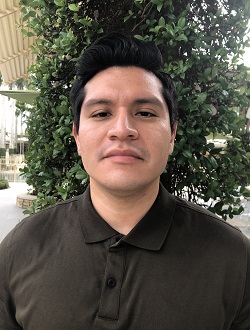Each year, Pride Month offers a crucial opportunity to recognize and celebrate the resilience, humanity, and diversity of the LGBTQ+ community. But more than that, it reminds us of what is still at stake. At a time when LGBTQ+ rights are once again under political and cultural attack, Pride is more than a celebration—it is a call to protect mental health, to fight for safety and dignity, and to center voices that are often silenced.
This Pride Month, as we recognize Stonewall Day, we’re reminded that Pride began not with rainbow banners or corporate sponsorships, but with a fight against injustice. Pride has always been about survival, resistance, and community. Today, with LGBTQ+ individuals—especially transgender people—facing increasing discrimination, misinformation, and mental health crises, it’s more important than ever to understand the history behind this month, to confront harmful myths, and to extend real, informed, and compassionate support.
Stonewall Day: Remembering the Roots of Pride
Stonewall Day, observed annually on or near June 28, commemorates the 1969 Stonewall Uprising, a pivotal moment in LGBTQ+ history. In the early morning hours, patrons of the Stonewall Inn—a gay bar in New York City’s Greenwich Village—resisted yet another violent police raid. Their refusal to back down sparked several days of protests and ignited a global movement for LGBTQ+ rights.
The uprising wasn’t led by institutions or mainstream figures. It was led by people who had been pushed to the margins of society—especially transgender women of color like Marsha P. Johnson and Sylvia Rivera, who risked their lives to stand up against the violence and humiliation their communities faced every day. Stonewall Day honors this legacy of courage, community, and defiance. It asks us to remember that LGBTQ+ rights were never granted freely—they were fought for by people whose mental health was constantly endangered by systemic oppression, poverty, and isolation.
For many in the LGBTQ+ community, the memory of Stonewall is not a distant history lesson—it is a living reminder that progress is fragile, and that resilience is often born out of necessity. Recognizing this day is not just an act of remembrance; it’s an act of recommitment to the ongoing fight for mental and emotional well-being, justice, and freedom.
The Mental Health Landscape for LGBTQ+ Individuals
While visibility has increased in recent years, LGBTQ+ individuals still face significant mental health challenges. These challenges are not inherent to their identities, but rather the result of enduring societal stigma, lack of support, systemic discrimination, and personal rejection.
According to research from The Trevor Project and the National Alliance on Mental Illness (NAMI):
- LGBTQ+ youth are over four times more likely than their peers to attempt suicide.
- 40% of transgender adults have attempted suicide in their lifetime, a rate nearly nine times that of the general population.
- Discrimination, rejection, and violence significantly increase rates of depression, anxiety, PTSD, and substance use disorders.
- LGBTQ+ people of color face compounded mental health risks due to the intersection of racism and queerphobia.
It’s important to understand that when someone is forced to constantly explain or defend their identity, their sense of safety and self-worth erodes over time. Repeated experiences of microaggressions, exclusion, or invalidation can lead to chronic stress and what psychologists refer to as minority stress—the additional mental and emotional strain that marginalized individuals experience due to societal stigma.
This is especially critical for transgender and nonbinary people, who are regularly denied gender-affirming care, ridiculed in public discourse, misrepresented in the media, and treated as political pawns. When rights are stripped away or debated in public arenas, it sends the harmful message that these individuals’ lives and experiences are negotiable or lesser than.
Debunking Harmful Myths and Misinformation
One of the most effective tools of oppression is misinformation. In recent years, a surge in anti-LGBTQ+ rhetoric has attempted to paint LGBTQ+ individuals—especially transgender people—as dangerous, unstable, or unnatural. These false narratives are not just untrue—they are lethal. They increase public hostility, validate discrimination, and contribute directly to mental health crises within LGBTQ+ populations.
Let’s address a few of these harmful myths:
Myth: “Being transgender is a trend or phase.”
Reality: Transgender identities are not new. Trans people have existed in nearly every culture and era of history. From the Hijra of South Asia to Two-Spirit individuals in many Indigenous cultures, gender diversity is part of the human experience. For many trans people, identifying and living as their authentic gender is not a fad—it is a lifelong journey often begun in childhood.
Myth: “LGBTQ+ people are trying to ‘groom’ children.”
Reality: This claim is not only false but dangerous. It is rooted in long-standing homophobic and transphobic tropes that equate queerness with perversion. In reality, LGBTQ+ individuals are far more likely to be victims of abuse than perpetrators. Associating LGBTQ+ identities with predatory behavior creates an environment of fear and hostility, which in turn causes real psychological harm.
Myth: “Pride Month is just about celebrating sex.”
Reality: Pride is about far more than sexual behavior—it’s about visibility, dignity, resistance, love, and healing. The assertion that Pride is overly sexualized ignores its deep historical and political roots and reduces queer identity to a stereotype. It also deflects from the real issues LGBTQ+ communities are facing: housing discrimination, lack of healthcare access, legal inequality, and widespread mental health challenges.
Busting these myths is not just an intellectual exercise. It’s an act of support and a way to create safer environments—at work, in schools, in families, and online—where LGBTQ+ individuals can live without fear of being misunderstood or vilified.
Why Pride Still Matters—Now More Than Ever
Some people ask, “Why do we still need Pride?” The answer is found in nearly every news headline involving LGBTQ+ rights: increasing legislation banning gender-affirming care, censorship of LGBTQ+ literature in schools and libraries, discriminatory policies in healthcare and housing, and acts of violence committed against LGBTQ+ individuals.
Pride is not a relic of the past—it is an urgent and active declaration that LGBTQ+ lives are valuable, and that their mental and emotional health matters. For many people, especially youth, Pride may be the first time they see themselves reflected in joy, in power, and in community. It provides a protective factor against despair by offering connection, visibility, and celebration of identities that are often shamed or erased.
We need Pride because:
- LGBTQ+ youth are still kicked out of their homes and face homelessness at disproportionate rates.
- Transgender individuals are still fighting for access to basic healthcare.
- LGBTQ+ elders face isolation in care facilities where they often have to hide their identities again.
- People continue to be attacked simply for existing in public as their true selves.
Pride saves lives—not just symbolically, but in real and measurable ways.
How to Support LGBTQ+ People in Meaningful, Mental Health–Focused Ways
Being a supportive ally means more than tolerance—it means active engagement, education, and care. Here are several mental health–oriented ways to support the LGBTQ+ people in your life, from close family members to strangers you encounter in your community.
1. Affirm and Respect Their Identity
Use people’s correct names and pronouns. Avoid jokes or “slips” that minimize their identities. These simple acts of respect are protective factors for mental health and can drastically lower suicide risk in trans and nonbinary individuals.
2. Create Safe, Affirming Spaces
Whether it’s your home, your workplace, or your place of worship, cultivate environments where LGBTQ+ people feel safe, welcomed, and celebrated. This goes beyond inclusion—it’s about affirmation.
3. Encourage and Support Mental Health Resources
Be familiar with affirming therapists, hotlines, and support groups in your area. If someone you care about is struggling, help them access those resources. Let them know they are not alone.
4. Educate Yourself Proactively
Don’t wait for someone to explain their existence to you. Take the initiative to read books, listen to podcasts, attend events, and follow LGBTQ+ educators and activists. Doing your own learning shows respect and reduces the emotional burden on those already marginalized.
5. Speak Out Against Injustice
Silence enables discrimination. If you witness homophobia or transphobia—online, in conversation, or in policy—use your voice to challenge it. Speak up even when it’s uncomfortable. Especially when it’s uncomfortable.
6. Support Legislative and Institutional Change
Vote for candidates who support LGBTQ+ rights. Oppose laws that limit access to care or erase LGBTQ+ people from public life. Remember, policy has a direct impact on mental health.
A Final Message: Mental Health, Hope, and the Power of Support
To the LGBTQ+ community: Your existence is not up for debate. You are not broken. You are not too much. Your identity is not a burden to explain or justify. You are deserving of safety, of joy, of rest, and of mental peace.
To allies: Your support can be lifesaving. Whether you’re a parent, a friend, a coworker, or a stranger, your compassion and willingness to understand can be the difference between despair and hope for someone who needs to be seen and accepted.
Mental health support starts with listening, with learning, and with love. Pride Month and Stonewall Day remind us that the fight is not over—but neither is the capacity for healing, joy, and justice. Let us build a future where all identities are celebrated and all people are free to be exactly who they are.
Because we are not truly equal until everyone is equal.
And mental health—just like love, dignity, and safety—is for everyone.

![[6.28] Pride Blog](https://swflcounsel.com/wp-content/uploads/2025/06/6.28-Pride-Blog.webp)







